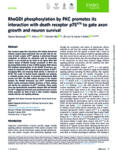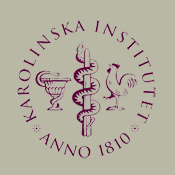Ligand-induced cell adhesion was discovered at our laboratory as one of the mechanisms underlying the synaptogenic effects of GDNF and its receptor GFRa1 (Ledda et al. Nat. Neurosci. 2007). GDNF treatment of cells expressing GFRa1 induces the formation of cell aggregates in a saturable process that requires continuous presence of GFRa1 on the cell membrane. Due to the presence of GFRa1 in pre- and post-synaptic specializations, and its requirement for synapse formation in vitro and in vivo, this novel cell adhesion activity may contribute to synapse formation and neuronal connectivity. Although the precise molecular mechanism (whether trans-homodimerization, receptor allosterism, or other) is still unclear, it represented the first example of cell adhesion mediated by binding of a ligand to a cell surface receptor which otherwise lacks cell adhesion activity. Now a group of researchers led by Prof. Masayoshi Mishina from the Uiversity of Tokyo have discovered a second example of this phenomenon, suggesting that it may be a general mechanism of cell-cell engagement. The new work involves the synaptogenic actions of GluRd2 and Neurexin receptors in cooperation with the Cerebellin 1 (Cbln1) ligand and has been published in the June 11 issue of Cell.
|
|||||
|
“Den som vantar pa nagot gott …” Indeed, a selection of the photographs taken during our last Molpark meeting is -finally- seeing the light of day. Follow the wanderings of the Molpark crew through the wastelands of Seiano, Pompei and Positano amid awful landscapes and horrid foods in some of the worst weather conditions imaginable. A postdoctoral position is available for experienced neurobiologists to join our team investigating the role of GDNF and its receptors in the control of cortical interneuron development and function (see Pozas et al. Neuron 2005 and Canty et al. J. Neurosci. 2009). The aim of this research is to elucidate novel pathways regulating the diversification, migration and allocation of cortical inhibitory interneurons. In order to tackle these questions, we have at our disposition a battery of conditional and inducible mutant mouse lines which will be available for analysis at the start of the project. We are seeking a talented, innovative and enthusiastic researcher with a PhD awarded within the last 4 years. Highly motivated candidates with a genuine interest in developmental neuroscience, signal transduction and mouse genetics are encouraged to apply. Priority will be given to candidates with strong expertise in one or more of the following areas: mouse forebrain development, cell transplantation, birth dating and lineage analyses, neuron primary culture, cell signaling assays and cell microscopy. Visit the lab Open Positions page for details on how to apply. |
|||||
|
Copyright © 2025 Carlos Ibanez Lab @ KI - All Rights Reserved Powered by WordPress & Atahualpa |
|||||


